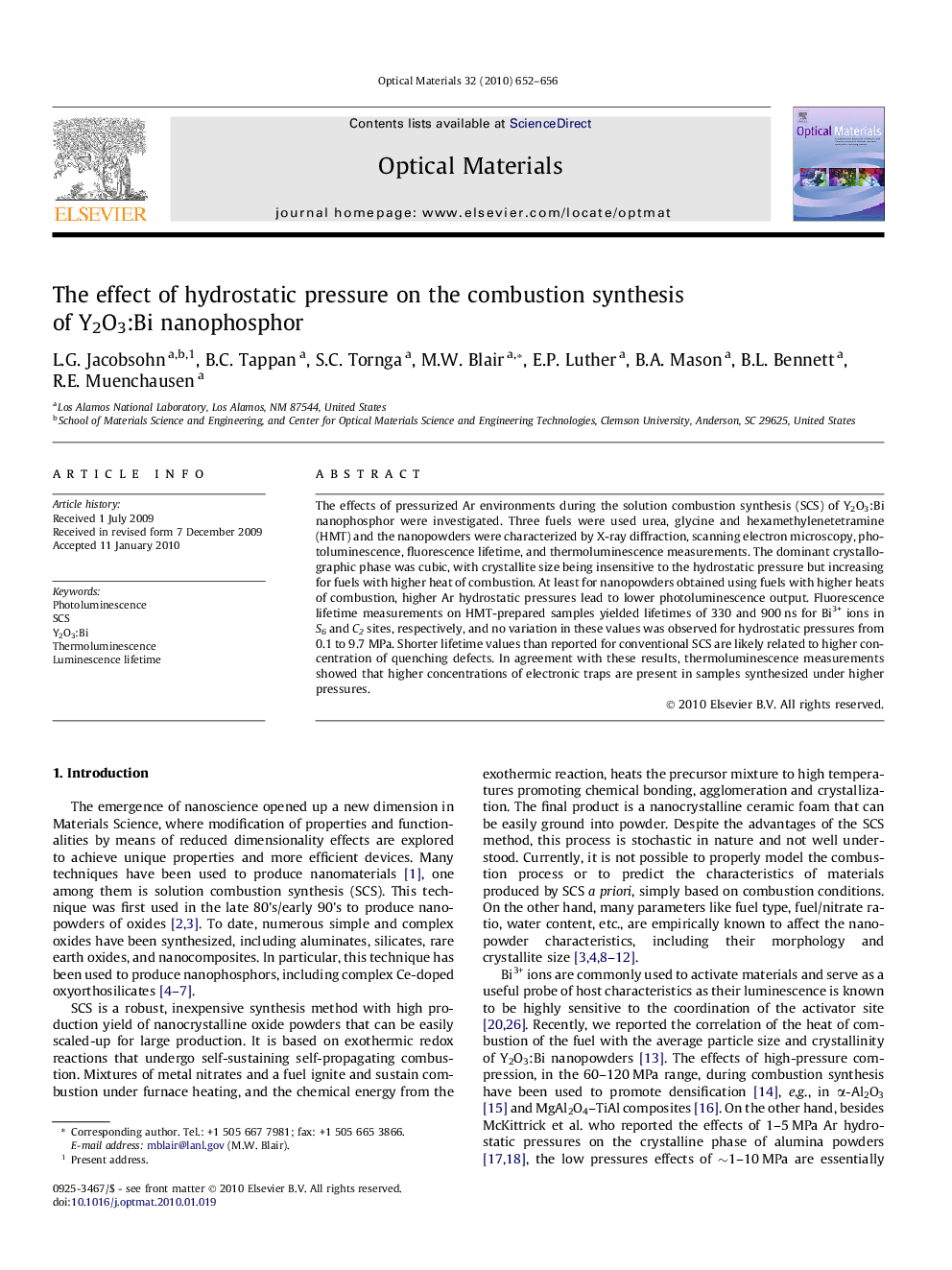| Article ID | Journal | Published Year | Pages | File Type |
|---|---|---|---|---|
| 1496742 | Optical Materials | 2010 | 5 Pages |
Abstract
The effects of pressurized Ar environments during the solution combustion synthesis (SCS) of Y2O3:Bi nanophosphor were investigated. Three fuels were used urea, glycine and hexamethylenetetramine (HMT) and the nanopowders were characterized by X-ray diffraction, scanning electron microscopy, photoluminescence, fluorescence lifetime, and thermoluminescence measurements. The dominant crystallographic phase was cubic, with crystallite size being insensitive to the hydrostatic pressure but increasing for fuels with higher heat of combustion. At least for nanopowders obtained using fuels with higher heats of combustion, higher Ar hydrostatic pressures lead to lower photoluminescence output. Fluorescence lifetime measurements on HMT-prepared samples yielded lifetimes of 330 and 900Â ns for Bi3+ ions in S6 and C2 sites, respectively, and no variation in these values was observed for hydrostatic pressures from 0.1 to 9.7Â MPa. Shorter lifetime values than reported for conventional SCS are likely related to higher concentration of quenching defects. In agreement with these results, thermoluminescence measurements showed that higher concentrations of electronic traps are present in samples synthesized under higher pressures.
Related Topics
Physical Sciences and Engineering
Materials Science
Ceramics and Composites
Authors
L.G. Jacobsohn, B.C. Tappan, S.C. Tornga, M.W. Blair, E.P. Luther, B.A. Mason, B.L. Bennett, R.E. Muenchausen,
